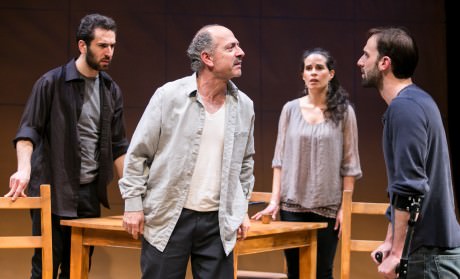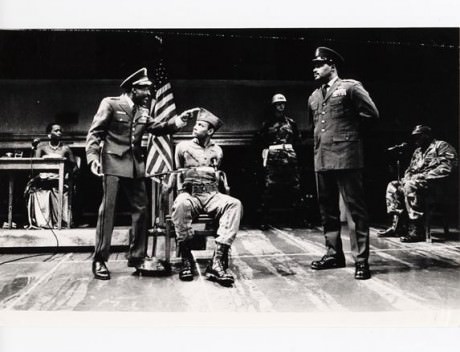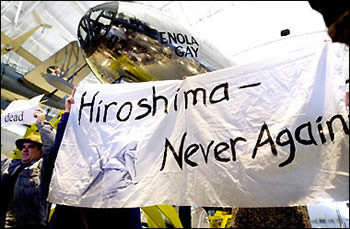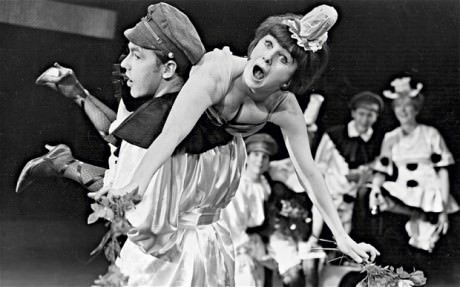I recently experienced Motti Lerner’s The Admission, Theatre J’s production remounted by Busboys & Poets at Studio Theatre (my review is here). The controversy that the play generated was surprising only in the fact that a controversy existed at all. I mean, for the most part, American theatres (Washington theatres included) steer clear of explosively controversial subject matter, particularly when that subject matter zeros in on that most dangerous of vortexes: the intersection between national identity and war. Thus, Ari Roth’s decision to have Theatre J present The Admission, a play that offers a frank and painful portrayal of Israeli and Palestinian families ravaged by the horrors of war, was a bold move, and deserves plaudits.

Yet, ironically, for theatre to move beyond its function as entertainment and enter the realm of what poet Robert Hazel called “the felt-thought”, that is just what theatre must do: it must fundamentally challenge status quo understandings of the world, the nation, the family, the self in order to generate serious discussion.
Usually theatres offer their audiences situations and characters that fall within the broad comfort zone of their audiences, presenting an acerbic twist or irreverent view but without turning the status quo view of the world on its head. That way, theatres do not create a flare up of emotion and outrage: at best, a production might cause a simple dust up leading to accusations about poor artistic choices.
The 1960s were the most recent heyday of controversial choices in the American Theatre. Sex, nudity, Jesus, and foul language aside, within the realm of identity and war Megan Terry’s Viet Rock rattled the most, opening at La MaMa Experimental Theatre Club in 1966. Interestingly, Gerome Ragni performed in that show and he would later go on to develop Hair, borrowing its anti-war theme and improvisational techniques. By the time Hair came to The National Theatre, however, its Act I nudity and irreverence to the American flag could muster only a dust up.

Peter Sellars’ brief tenure at The Kennedy Center and its American National Theatre had its share of controversy; a large enough share to send Sellars packing after only two years. His version of Sophocles’ Ajax by Robert Aulettawas the most notable. Presented at the height of the Reagan administration’s overt and covert involvement in its bloody wars in Central America and Africa, and set on the steps of the Pentagon in Washington, DC after a future victory in some unnamed Central American country, more than a few Kennedy Center patrons were outraged and financial supporters fled the institution. Sellars’ production even filled an Ajax-trapped Plexiglas box With the blood of his victims–a sure way to rattle status quo believers in a nation’s just wars.
During the 1990s the Shakespeare Theatre presented Joanne Akalaitis’s modernized production of another Greek classic, The Trojan Women. Although she avoided any direct association between the savage, horrifying violence she brought to the stage and the real brutality of war, I still remember ever so distinctly the ironic feeling I had upon leaving the plush theatre still ringing with images, not of the production, but America’s own 30 days of Shock and Awe waged against Iraqi cities and bunkers.Akalaitis might not have meant for that analogy to dominate, but events being what they were during those days, the connection was unavoidable.

Strangely, the most controversial bit of war-theatre during that decade happened not on the stage but at the Smithsonian, and that was the political theatre that erupted during the planned exhibition of the Enola Gay, the plane that dropped the atomic bomb, marking the end of World War II. A refurbished B-29 Enola Gay ignited a firestorm of controversy over how our nation should represent the dropping of the atom bomb on Japan. The exhibit had planned to display the plane and factually discuss casualties and the effects of a nuclear weapon on human beings. The exhibit that made it past the censures in 1995 had the plane and little else.
Unfortunately, in Washington, DC’s 21st century theatrical geography, few productions have even stirred the dust much less stirred the American consciousness about the nation’s continuous wars or astronomical military budgets.
We have had imports: the UK’s Tricycle Theatre’s The Great Game: Afghanistan being the most memorable, but no Oh, What a Lovely War! to really get us shouting (a revival of this anti-war Vietnam era play, which uses World War I as its subject, is now taking place in London with equal bone-rattling results.)
We have had plays that address the plight of soldiers, plays which in the long run seemingly encourage this scary belief that somehow we can devise a war machine and strategy that will only kill the enemy’s “bad guys,” leaving our soldiers wound free.
And this absence of critical American war plays is happening even though this century started with a president predicting that our war against “terrorism” would last 30 years (30 years? Think Peloponnesian War, think a bankrupt Athens, think Aristophanes and Lysistrata ….)

Maybe it is time for a play that does what Lovely War did. As English historian A. J. P. Taylor declared: “Oh, What a Lovely War does what the historians have failed to do.” It was “a striking demonstration of what the war was about. Indeed, it occurred to me after I had seen it to wonder how much historians were to blame for the fact that one has to go to the East End of London to get a lively interpretation of this difficult subject.”
The Admission might be about a land far away and a time long ago (Israel, 1948, is at least far away according to the average American’s geographical memory), and it does not have any song and dance, or satire, but it is most certainly a dramatic interpretation of a difficult subject, and that topic couldn’t strike closer to home.
American politicians love to think of themselves and of America in general as blameless when it comes to its endless war-footing. It’s always the other guy, the guy on the wrong side of the tracks, with the wrong religion or culture or politics that has somehow behaved less than honorably.
The Admission takes the mythologizing of war, of one particular war, and through its frankness, puts all its cards on the table. War is messy; war is death; war is, for the most part, amoral: not with good guys on one side and bad guys on the other; but a whole lot of pain and destruction and horror and aftermath on the “in between”.
I only wish our theatre had the fortitude to lay those cards on the table more often.
The Admission plays through May 18th, 2014 at The Studio Theatre’s Mead Theatre-1501 14th Street, NW, in Washington, DC. Tickets are available online. Running Time is one hour and 45 minutes, with one 15-minute intermission.
LINKS
David Friscic’s review of The Admission at The Studio Theatre.
John Stoltenberg’s review of The Admission at Theater J.
Robert Michael Oliver’s review of The Admission.





